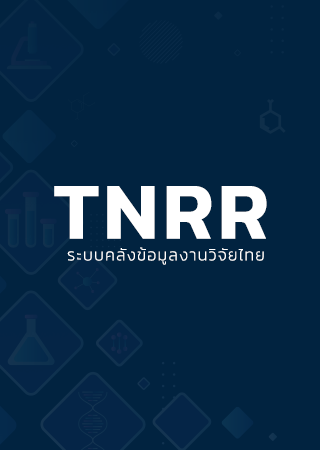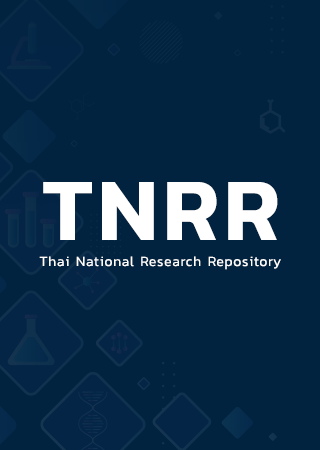การศึกษายีน BoLA-DRB hyplotypeต่อความต้านทานโรคไข้เห็บในโคนมพันธุ์ซาฮิวาล โคนมลูกผสมโฮลสไตน์ ฟรีเชี่ยนระดับสาย เลือดต่างๆ

โดย นายยวงยศ จินดาทะจักร์
หมวดหมู่
รายงานการวิจัย
ประเภทสื่อ
eBook
0
(0 รีวิว)
จำนวนคงเหลือ
:
Share
รายละเอียด
การศึกษาครั้งนี้มีวัตถุประสงค์เพื่อตรวจหาความสัมพันธ์ระหว่างยีน BoLA-DRB3.2 ที่เกี่ยวข้องกับความต้านทานโรคไข้เห็บจากเชื้อ A. marginale, B. bigemina และ B. bovis ในโคนมพันธุ์ซาฮิวาล โคนมลูกผสมโฮสไตน์ ฟรีเชี่ยนระดับสายเลือดต่างๆ โดยเก็บเลือดจากโคจำนวน 383 ตัว จากประชากรโคนมพันธุ์ซาฮิวาลและลูกผสมโฮลสไตน์ฟรีเชียนเพื่อสกัดดีเอ็นเอวิเคราะห์หาการติดเชื้อไข้เห็บด้วยเทคนิค PCR และตรวจหารูปแบบจีโนไทป์ BoLA-DRB3.2 ของโคแต่ละตัวด้วยเทคนิค PCR -RFLP จากการศึกษาพบว่าโคในทุกประชากรมีการติดเชื้อ A. marginale สูงกว่า B.bovis และ B. bigemina ตามลำดับ ผลการศึกษาความสัมพันธ์ของรูปแบบยีน BoLA-DRB3.2 ในโคนม พบรูปแบบของอัลลีล BoLA-DRB3.2 ทั้งหมด 106 รูปแบบ เป็นรูปแบบอัลลีลที่เคยมีรายงานมาแล้ว 49 รูปแบบ และรูปแบบอัลลีลใหม่ที่ไม่เคยรายงาน 57 รูปแบบ เมื่อศึกษาความสัมพันธ์ของยีน BoLA-DRB3.2 ต่อการเกิดโรคไข้เห็บในโคนม ด้วยวิธี Logistic Regression พบอัลลีลที่สัมพันธ์กับความน่าจะเป็นการติดเชื้อ A. marginale จำนวน 4 อัลลีล โดยอัลลีลที่ง่ายต่อการติดเชื้อได้แก่ DRB3*2 และ *15 ส่วนอัลลีลต้านทานได้แก่ *14 และ *41 และพบอัลลีลที่สัมพันธ์กับการติดเชื้อ B. bigemina จำนวน 3 อัลลีล โดยพบว่าอัลลีล *20 ง่ายต่อการติดเชื้อส่วนอัลลีลต้านทานได้แก่ *10 และ *51 และพบอัลลีลที่สัมพันธ์กับการติดเชื้อ B. bovis จำนวน 3 อัลลีล โดยพบว่าอัลลีล *3 และ *16 ง่ายต่อการติดเชื้อส่วน *14 เป็นอัลลีลที่สัมพันธ์ต่อการต้านทานต่อการติดเชื้อ ซึ่งสามารถใช้เป็นแนวทางในการคัดเลือกโคนมเหล่านี้ด้วยเครื่องหมายพันธุกรรม (Marker Assisted Selection) ได้ต่อไปในอนาคต
This study aimed to detect the associations between BoLA-DRB3.2 genes with disease resistance from tick fever infections by B. bigemina, B. bovis and A. marginale in Sahiwal and crossbred Holstein-Friesian dairy cattle. Blood were collected from 383 cows and DNA were detected for detection tick fever infections using PCR technique and detection patterns of BoLA-DRB3.2 with PCR-RFLP. The results showed that the population were infected by A. marginale higher than B. bigemina and B.bovis respectively. The 106 patterns of BoLA-DRB3.2 allele were found. Forty-nine alleles were similar to previous reports, and 57 alleles have not been reported. The analysis of associations between BoLA-DRB3.2 with tick fever infections by Logistic Regression found that four alleles associated to A. marginale infections. The susceptible alleles were DRB3 *2 and *15 and the resistant alleles were *14 and *41. In addition, there were three alleles associated with B. bigemina infections. The susceptible alleles was *20, while the resistant alleles were *10 and *51. Finally, there were three alleles associated with B. bovis infections. The susceptible alleles were *3 and *16 and the resistant alleles was *14. This study can be applied in selection program using genetic markers (Marker Assisted Selection) in the dairy population.
This study aimed to detect the associations between BoLA-DRB3.2 genes with disease resistance from tick fever infections by B. bigemina, B. bovis and A. marginale in Sahiwal and crossbred Holstein-Friesian dairy cattle. Blood were collected from 383 cows and DNA were detected for detection tick fever infections using PCR technique and detection patterns of BoLA-DRB3.2 with PCR-RFLP. The results showed that the population were infected by A. marginale higher than B. bigemina and B.bovis respectively. The 106 patterns of BoLA-DRB3.2 allele were found. Forty-nine alleles were similar to previous reports, and 57 alleles have not been reported. The analysis of associations between BoLA-DRB3.2 with tick fever infections by Logistic Regression found that four alleles associated to A. marginale infections. The susceptible alleles were DRB3 *2 and *15 and the resistant alleles were *14 and *41. In addition, there were three alleles associated with B. bigemina infections. The susceptible alleles was *20, while the resistant alleles were *10 and *51. Finally, there were three alleles associated with B. bovis infections. The susceptible alleles were *3 and *16 and the resistant alleles was *14. This study can be applied in selection program using genetic markers (Marker Assisted Selection) in the dairy population.
ข้อมูลเพิ่มเติม
| วันที่เผยแพร่ | 10/2021 |
| สำนักพิมพ์ | กรมปศุสัตว์ |
| หมวดหมู่ | รายงานการวิจัย |
| จำนวนหน้า | 77012 |
People Who Read This Also Read
รีวิว

